Kind of an urban American cousin to the remote monasteries at Meteora and Mount Athos, the monastery at the Sanctuary of our Sorrowful Mother in Portland stands atop an extinct cinder cone volcano, Rocky Butte.
Completed in 1936 and designed by L.L. Dougan, the monastery was the second major building in the sanctuary complex, after the Grotto itself.

So, what’s changed? The trees on Rocky Butte grew in and the windows were modernized in a 1980s renovation, but otherwise the monastery is basically unchanged–you can even identify the same rocks in the garden. The roses on the trellis were almost definitely an addition in post-production.
Father Ambrose Mayer and Servite Order of the Catholic church bought this land in 1923 from the Oregon–Washington Railroad and Navigation Co., envisioning the creation an enormous shrine atop Rocky Butte. The Sanctuary of our Sorrowful Mother would be an American counterpart to the sanctuary of Our Lady of Lourdes in France. Architect Luther Lee Dougan’s drew up the initial plans for the complex, with a two-towered basilica, seven lesser shrines, and a grand staircase connecting the Grotto to the basilica above. Befitting a sanctuary built on the grounds of a former quarry, all the buildings were to be trimmed with “Rocky Butte granite”.
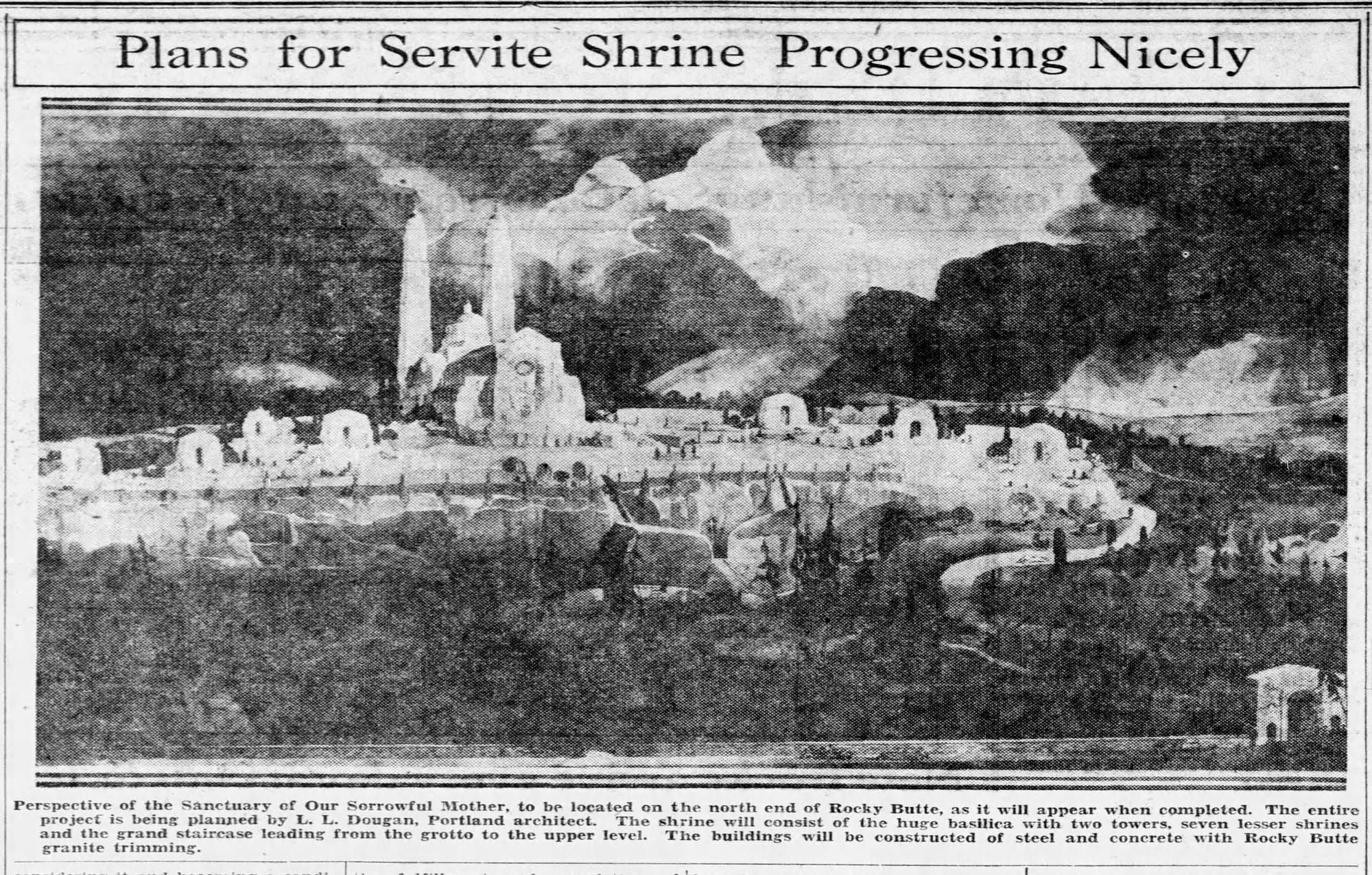
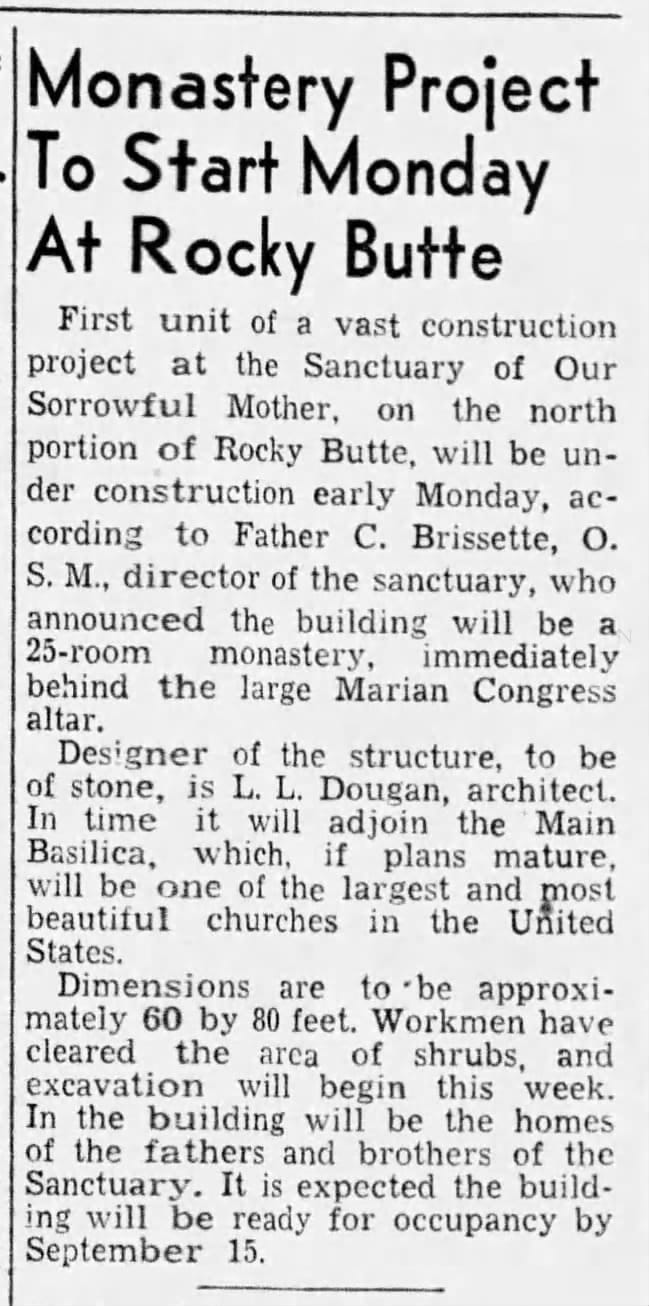

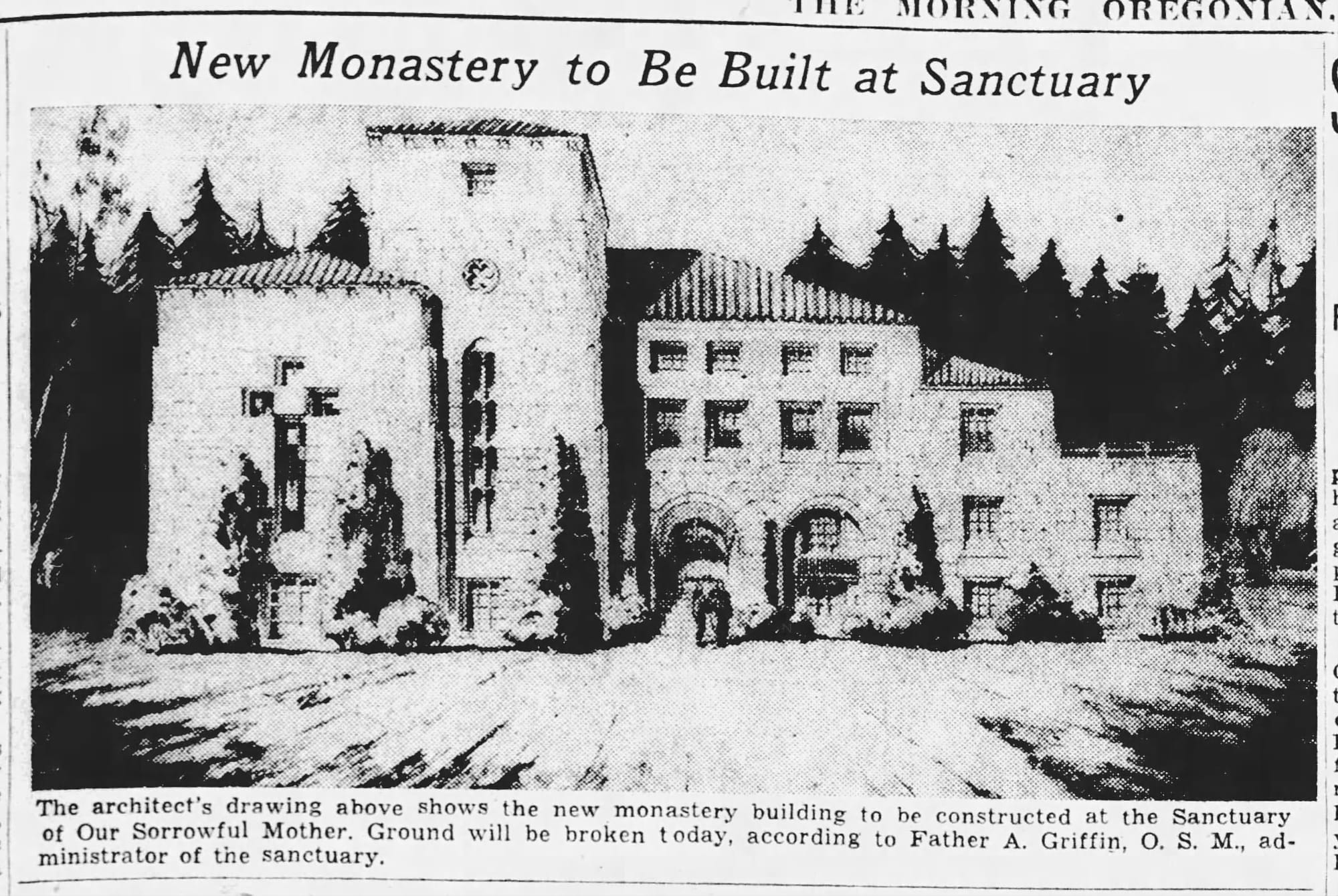

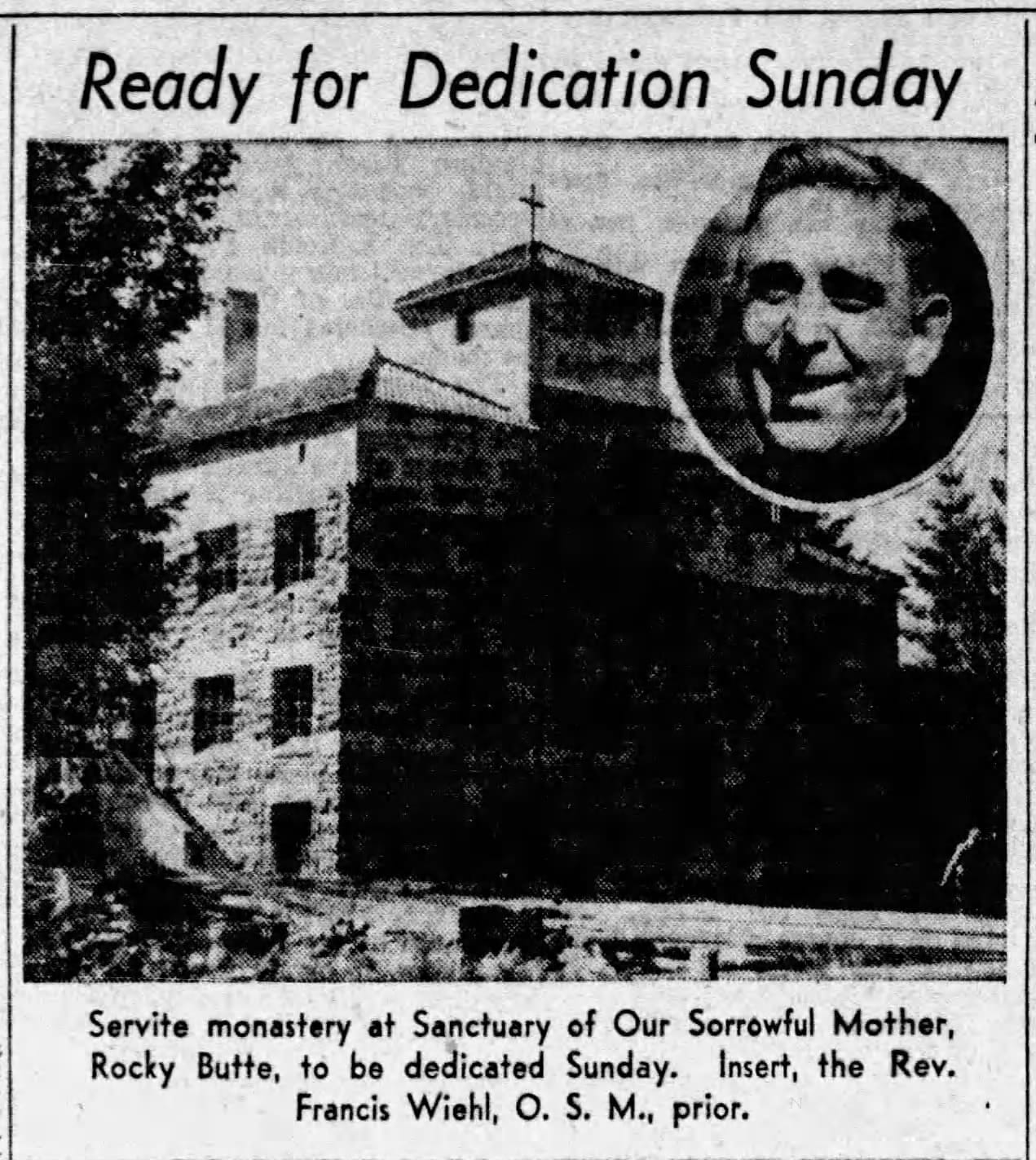
1927 rendering of the envisioned basilica complex | 1936 articles about work starting on the monastery and its dedication |
The Servites completed the Grotto first, in 1925, before building Dougan’s monastery in 1936. Plans for the massive basilica and sprawling Butte-top shrine didn't really come to fruition (in a good way–what's up there is way more serene anyway). The Chapel of Mary, on the lower level near the Grotto, was the next major building added to the sanctuary, in 1954, followed by the nifty modernist Marilyn Moyer Meditation Chapel above in 1991.
The monastery, faced with ashlar stone and roofed with green glazed tile, originally had 25 rooms for monks. The architect, L.L. Dougan, started his career in Chicago (allegedly working as an office boy for Frank Lloyd Wright and Louis Sullivan, although I’m skeptical), before arriving in Portland and striking up a successful partnership with Chester A. Houghtaling. Houghtaling & Dougan had a productive run from the 1910s into the 1920s. With Dougan the designer and Houghtaling the engineer, the firm embraced ornament and pastiche working across various revival styles while also hinting at Art Deco and early modernism–they tried to split the difference or meld the two. Their extant work around Portland includes the Portland Elks Temple, the Medical Arts Building, and the Lafayette Apartments.


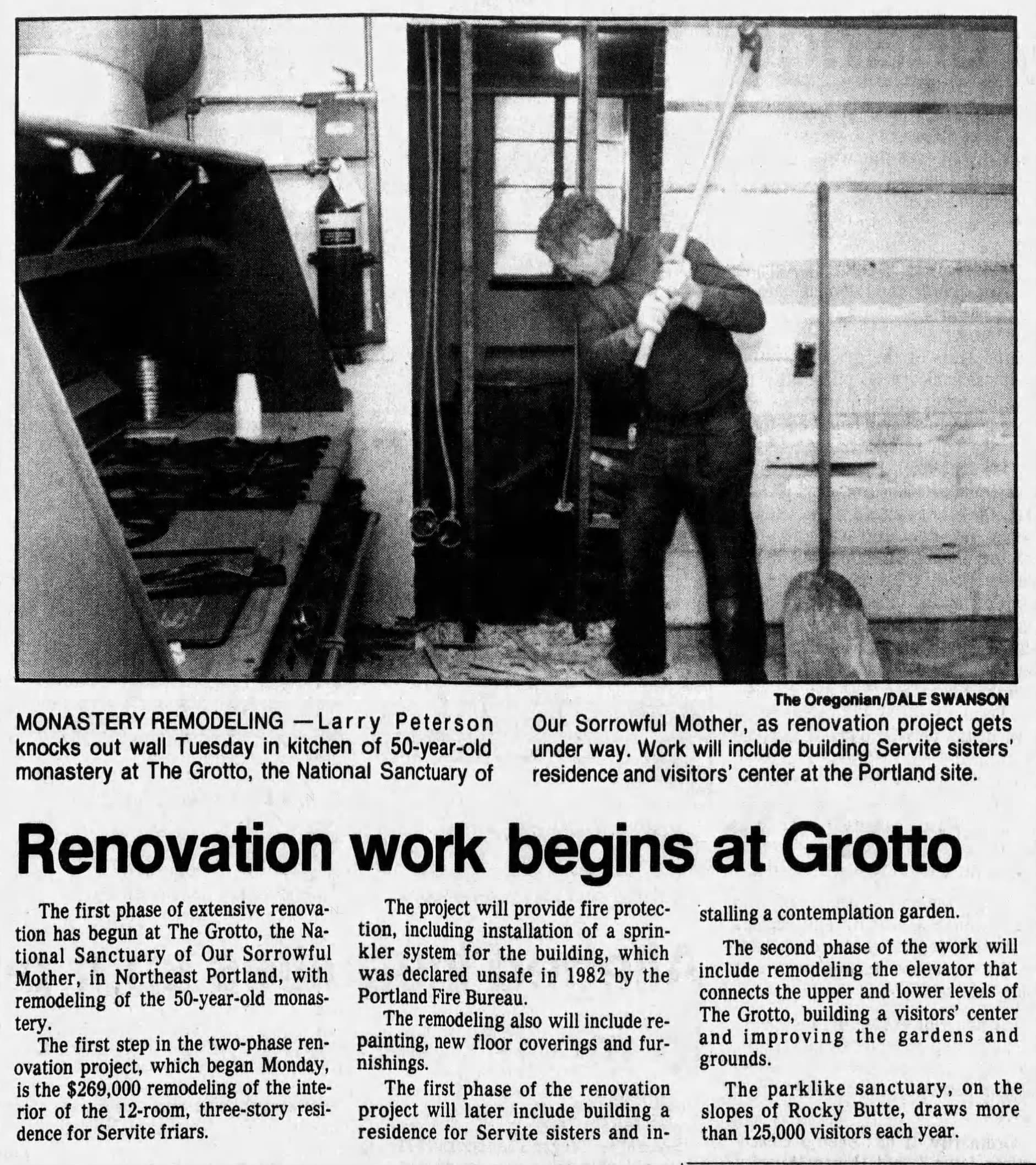
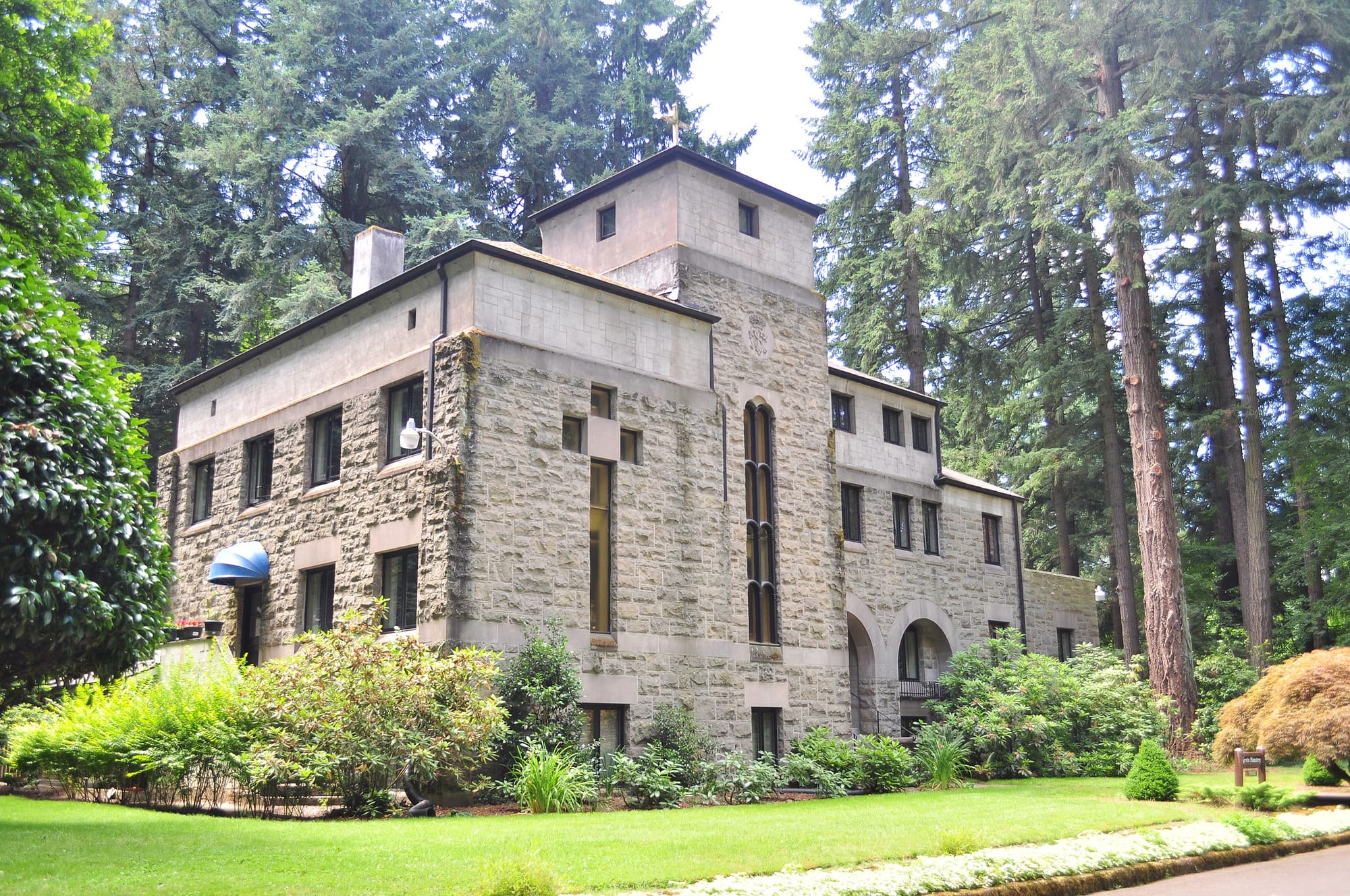
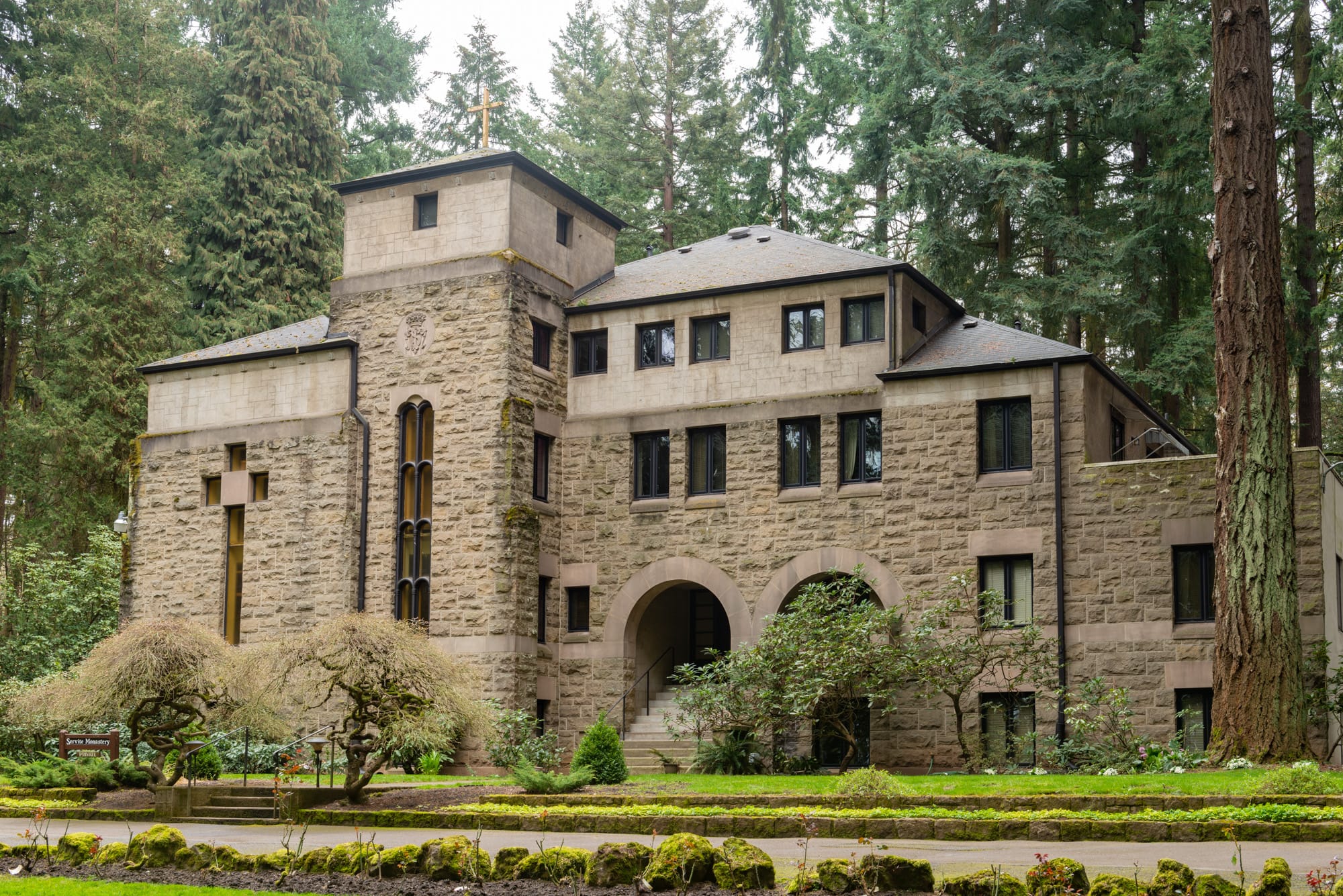
1949 article about the sanctuary's 25th anniversary celebration | 1984 article about the fundraising drive to restore and expand parts of the sanctuary | 1985 article on the renovation of the monastery | 2017, Joe Mabel, Wikimedia Commons | 2019, Gary Halvorson, Wikimedia Commons
In 1982 the Portland Fire Bureau condemned the monastery, saying it was too unsafe for the 13 priests and friars who still lived here. After a fundraising effort–part of a broader burst of building that included a new visitor center– the monastery was outfitted with sprinklers and reopened as a 12-room residence for Servite friars in the mid-1980s.
Production Files
Further reading:

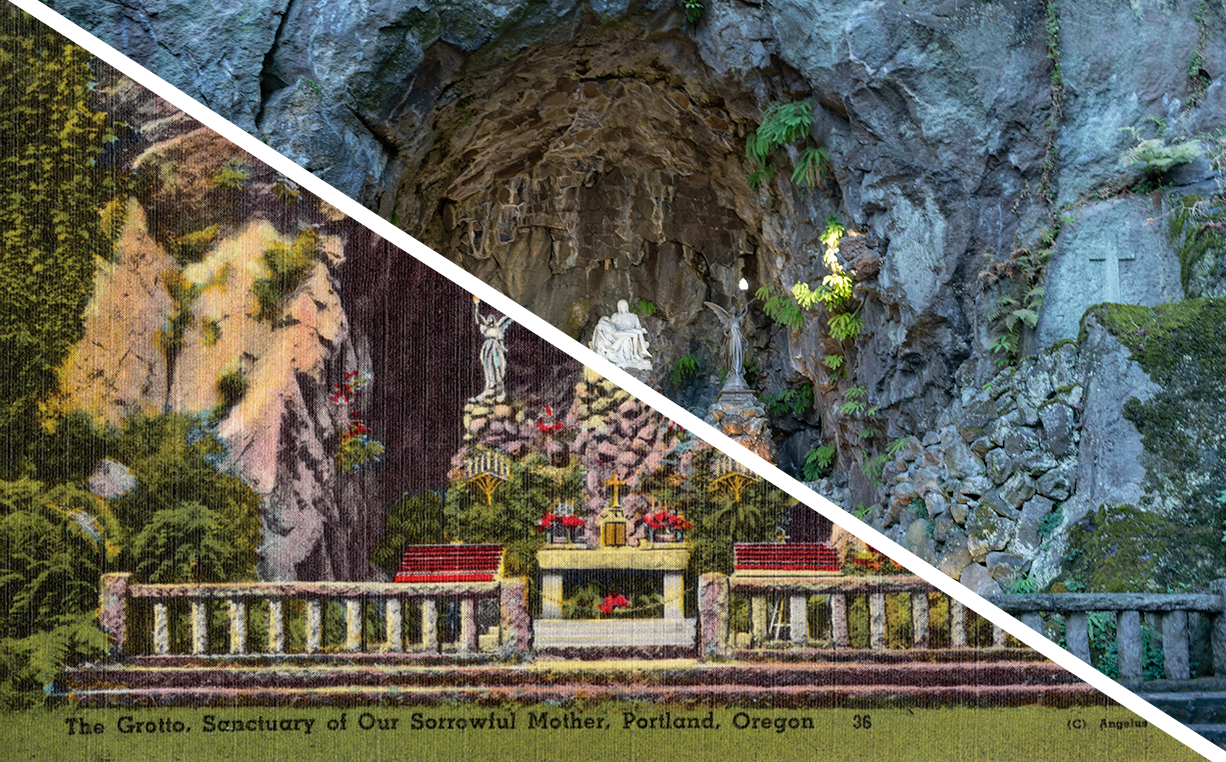
Some of the other buildings designed by Houghtaling & Dougan.
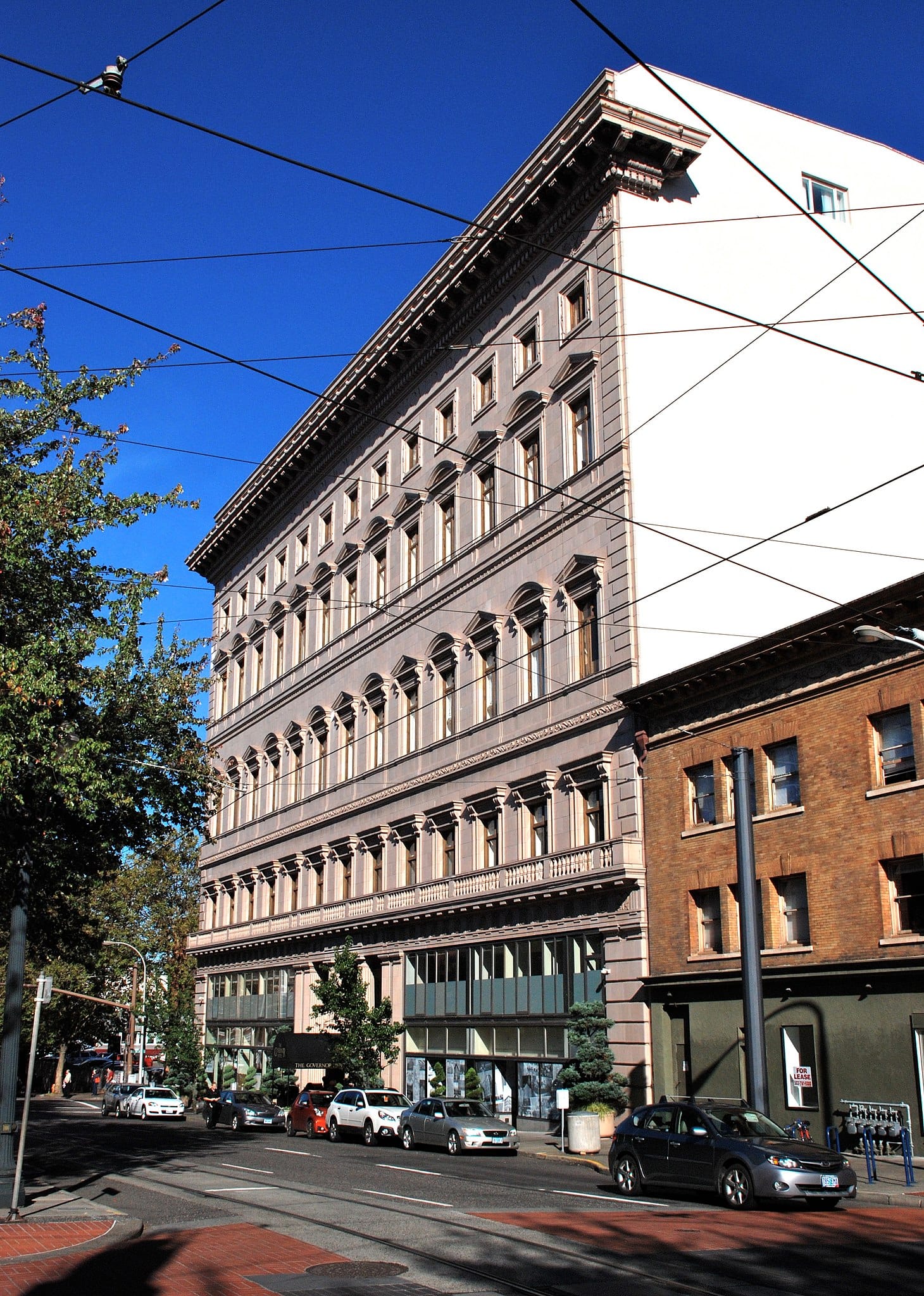
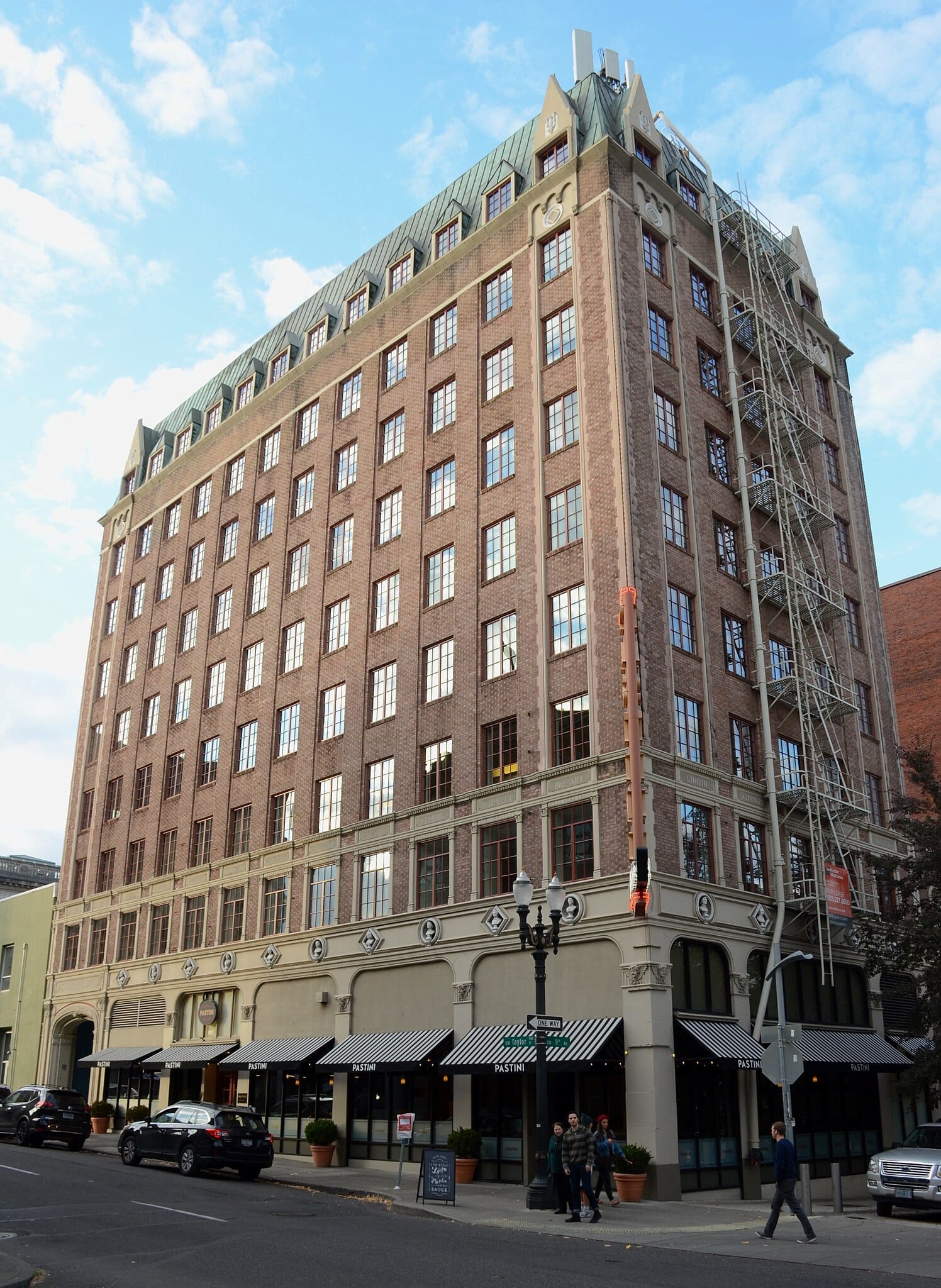

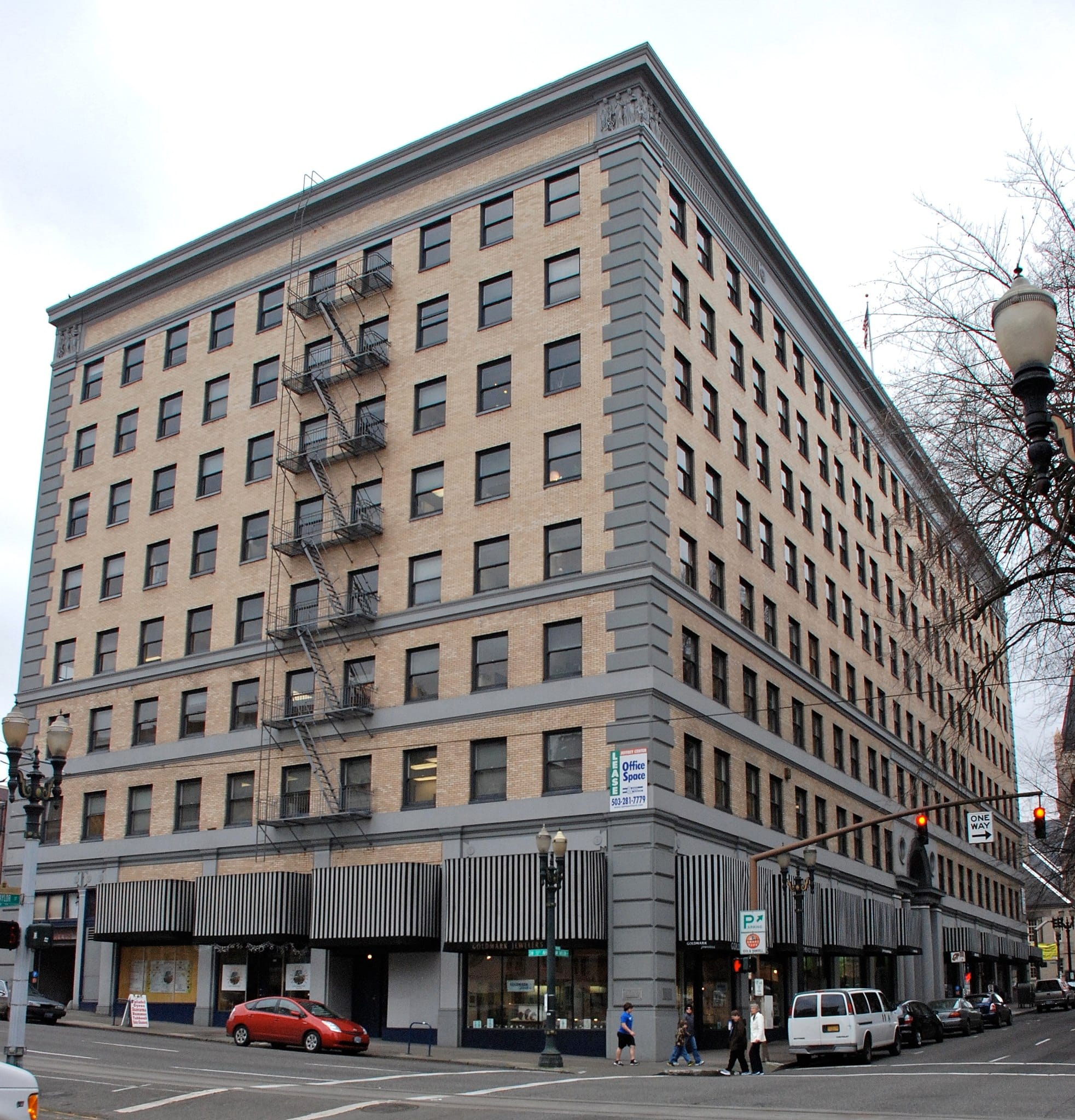
Portland Elks Temple, 2013, Steve Morgan, Wikimedia Commons | Studio Building, 2019, Steve Morgan, Wikimedia Commons | Washington High School, 2013, Steve Morgan, Wikimedia Commons | Medical Arts Building, 2011, Steve Morgan, Wikimedia Commons
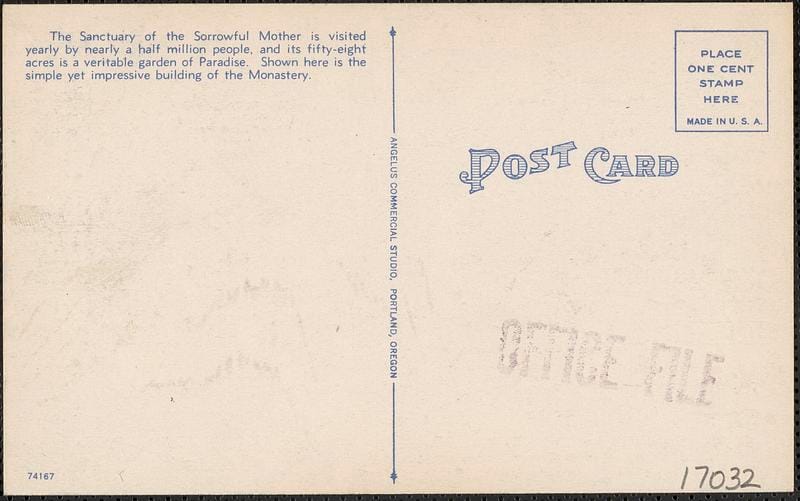



Member discussion: